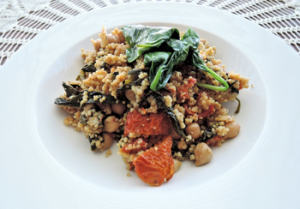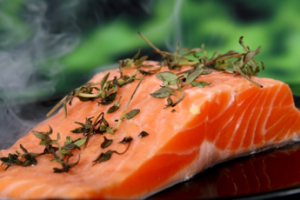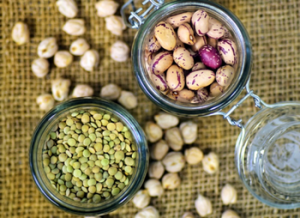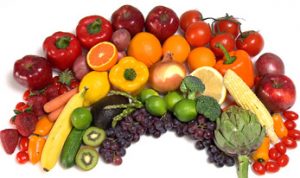3 Secrets to a Healthy Dinner Plate
What comes to mind when you think about the typical American dinner?
Did you think about something heavy, maybe a little bit greasy? Fast food? Or did you think about a well-balanced, colorful plate full of vegetables? With obesity on the rise in the nation, we need to pay attention to what is on our plates. So, let’s talk about one of Americans’ favorite meals—dinner. For a well-balanced dinner, you should include protein, grain/starch, and most importantly, vegetables. Even on those days where you might have been working long hours, there are tons of easy go-to options for a quick and healthy meal.
#1: PROTEIN
When preparing a meal, always try and select lean proteins. They have less relative saturated fat, making them a healthier option. Saturated fats are those that are solid at room temperature, and are highly present in beef and pork, so try to choose leaner cuts of these meats when you’re at the store. Protein sources such as chicken, ground turkey, fish, shrimp, or tofu are great lean choices. Even fatty fish (such as salmon or trout) are excellent choices because not only are they low in saturated fat (containing unsaturated fat instead), but they also contains omega-3 fatty acids, which have shown to lower blood pressure, decrease inflammation, and reduce risk of heart disease.
#2 Grains and Starch
When choosing your dinnertime carbohydrate, aim to make your grains WHOLE grain. When you buy non-whole grain products, you lose out on all of the health benefits of fiber. Sometimes, people get scared away from whole grains because they think they don’t like the taste. However, there are so many tasty whole grain options. Rice and quinoa can be used in almost any dish, and almost any type or brand of pasta these days is available in a whole grain option.
Whole grain products contain FIBER. Fiber keeps you full, helps maintain colon health,and aids in lowering cholesterol levels.If you aren’t a big fan of the taste of whole grain products, try swapping your grains for lentils or beans. That way, even MORE of your meal is plant based! Legumes are amazing because they act as a protein and a starch. If legumes don’t sound appealing, you can also substitute a baked sweet potato in place of your grains. Sweet potatoes have a variety of health benefits, and can make a tasty addition to your plate.
#3: Vegetables
Last but certainly not least, vary your vegetables!
All you have to do it eat the rainbow.
That’s right. A super easy way to make sure you are getting all the vitamins and minerals your body needs is to eat different colored vegetables and fruits. Vegetables come in every color except blue (weird!), and each color contains a specific set of vitamins and minerals that you need to keep your body in tip top shape.
A few extra tips to maybe keep in mind:
1) Think about cooking your foods in canola oil or olive oil rather than butter.
–>Oils generally have healthier fats in them.
2) Try not to over-salt your food.
–> Some foods are already salty enough! Try incorporating some different herbs and spices instead. Most Americans already get over their daily amount of sodium, and excessive sodium can contribute to high blood pressure and heart problems. For more information about heart health, read the Heart Health blog post!





Comments